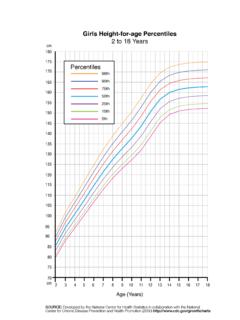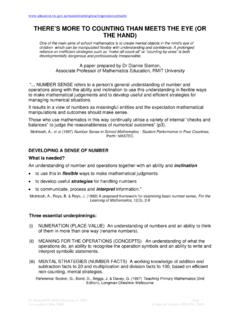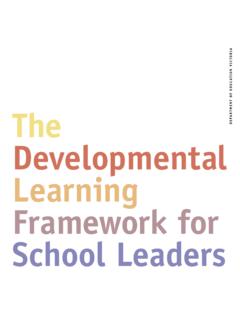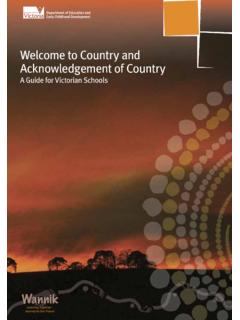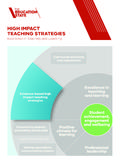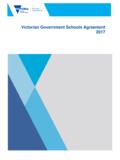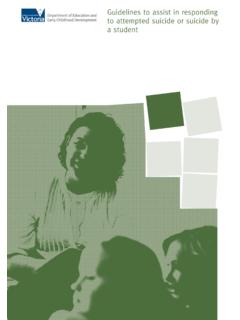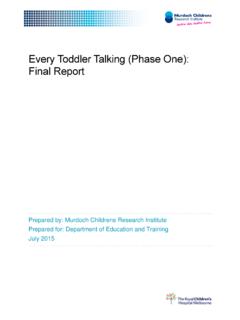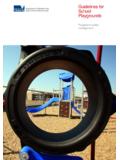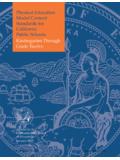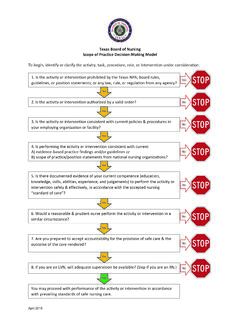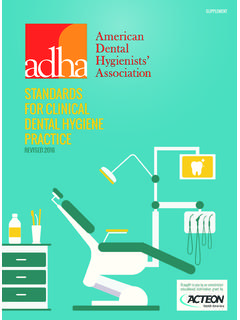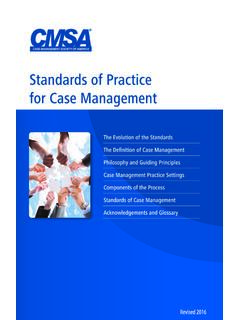Transcription of THE PEDAGOGICAL MODEL - Department of Education and ...
1 THE PEDAGOGICAL MODELC urriculum planning and assessmentEvidence-based high impact teaching strategiesEvaluating impact on learningParents and carers as partnersGlobal citizenshipNetworks with schools, services and agenciesBuildingcommunitiesBuilding practiceexcellenceExcellence in teaching and learningPositive climate for learningProfessionalleadershipCommunity engagement in learningStudent achievement, engagement and wellbeingEmpowering students and building school prideHealth and wellbeingSetting expectations and promoting inclusionIntellectual engagement and self awarenessInstructional and shared leadershipStrategic resource managementVision values and cultureBuilding leadership teamsEvaluate and diagnoseImplement and monitorPrioritise and set goalsDevelop and planStudent achievement, engagement and wellbeing Engage ExploreEvaluate Elaborate ExplainFirst published by the Department of Education and Training, Melbourne, June 2018.
2 , updated October 2020. State of Victoria ( Department of Education and Training) 2020 The copyright in this document is owned by the State of Victoria ( Department of Education and Training), or in the case of some materials, by third parties (third party materials). No part may be reproduced by any process except in accordance with the provisions of the Copyright Act 1968, the National Education Access Licence for Schools (NEALS) (see below) or with permission. An educational institution situated in Australia which is not conducted for profit, or a body responsible for administering such an institution may copy and communicate the materials, other than third party materials, for the educational purposes of the institution.
3 Authorised by the Department of Education and Training, 2 Treasury Place, East Melbourne, Victoria, 3002. ISBN 978-0-7594-0835-7 AcknowledgmentsThe Department of Education and Training (the Department ) acknowledges the expertise and commitment of teachers and school leaders in Victorian government schools who work to build teaching and learning excellence every day. We would like to thank school principals, teachers and departmental colleagues for their valuable contribution to developing this PEDAGOGICAL MODEL is designed to support delivery of the Victorian Curriculum F-10 and the Victorian Early Years Learning and Development Framework. It draws from the current evidence base, including the following frameworks and initiatives: Framework for Improving Student Outcomes Australian Professional Standards for Teachers Literacy and Numeracy Strategy Practice Principles for Excellence in Teaching and Learning High Impact Teaching Strategies (HITS) Professional Learning Communities School Differentiation MODEL (School Strategic Plan, AnnualImplementation Plan, Performance and Development Approach) New Pedagogies for Deep Learning Community of Providing feedbackThis resource is the result of generous collaboration among Victorian government school teachers and departmental colleagues.
4 We intend to update the resource over time, and your contribution will help us make it more useful for teachers. Please send your comments and ideas to: 4567891011 IntroductionWhy the PEDAGOGICAL MODEL ?What is the PEDAGOGICAL MODEL ?How does the PEDAGOGICAL MODEL fit into the Victorian Teaching and Learning MODEL ? How is the FISO Improvement Cycle embedded in the PEDAGOGICAL MODEL ?Who is the PEDAGOGICAL MODEL for? How does the PEDAGOGICAL MODEL align with other DET resources and initiatives?The PEDAGOGICAL MODEL domains explainedDomains overview 12 Engage14 Explore16 Explain 18 Elaborate20 Evaluate22 Glossary24 Evidence base264 Teachers have a critical role in shaping the lives of their students.
5 Victorian teachers work everyday to prepare our young people for a future which is characterised by dynamic change. The Victorian Government is committed to providing every student with opportunities to achieve excellence in reading, maths, science, critical and creative thinking, and the arts. Our ambitious Education State targets focus our efforts on promoting excellence across the curriculum, on the health and wellbeing of students, and on breaking the link between disadvantage and student outcomes. Our schools deliver this excellence through a focus on high quality teaching and learning. This is supported by the Victorian Teaching and Learning MODEL which includes the PEDAGOGICAL MODEL presented here.
6 The PEDAGOGICAL MODEL builds on the previous e5 MODEL and has been developed to align with the Framework for Improving Student Outcomes (FISO). These two key frameworks are developed from the latest and best evidence for what works and teacher feedback. Victorian te achers and school leaders are responding to the extraord inary learning challenges and opportunities facing children and young people. In response to these demands, the teaching profession itself is changing. Teachers are spending more time working together. They devote collaborative time to evaluating and improving their practice and they draw on PEDAGOGICAL resources to create deeper learning experiences fo r support and complement the efforts of our te achers and school leaders, we have developed the Victorian Teaching and Learning MODEL which has fo ur interrelate d elements.
7 It gives us a Vision for Learning, the Practice Principles for Excellence in Teaching and Learning, the PEDAGOGICAL MODEL and High Impact Teaching Strategies (HITS). Together, they form an evidence- based answer to the question every improvement-focused conversation in schools is about: What is highly effective te aching and learning? Each of the resources in the Victorian Teaching and Learning MODEL builds on the improvement priorities of the FISO and aligns with the Literacy and Numeracy Strategy Phase 2: Achieving Excellence and Equity in Literacy and Numeracy. Together they reinforce our shared vision and language for school improvement. The PEDAGOGICAL MODEL embeds that vision and language in the classroom, where teachers create opportunities for students to reach their full potential, regardless of their background or circumstance.
8 Teachers and school leaders have told us they want resources that expand their conversations about effective teaching and learning. The PEDAGOGICAL MODEL follows their lead, it is adaptive and flexible, not prescriptive and linear, and it encourages teachers to move back and forth between the five domains as they respond to their students learning needs. The PEDAGOGICAL MODEL maps the five domains to the relevant Practice Principles and HITs, and creates opportunities for deep learning the PEDAGOGICAL MODEL ? Introduction5 While FISO focuses on school improvement, the new PEDAGOGICAL MODEL underpins teacher practice improvement, recognising the vital role teachers play in improving student PEDAGOGICAL MODEL , as a part of the Victorian Teaching and Learning MODEL (p.)
9 7), supports schools to build teacher excellence and instructional leadership. Combined with the Vision for Learning, Practice Principles for Excellence in Teaching and Learning (Practice Principles) and High Impact Teaching Strategies (HITS), the PEDAGOGICAL MODEL will stimulate discussions about current teaching practices in schools, help schools to build a high performance learning culture, and ultimately improve student achievement and engagement. By providing common language and guidance on improving the quality and consistency of teaching practice, the PEDAGOGICAL MODEL enables school leaders, teachers and students to foster shared leadership so that everybody contributes to co-designed and connected PEDAGOGICAL MODEL defines what high quality teaching looks like.
10 It is not a prescription for practice. It is a flexible MODEL that can be readily modified for different school settings and learning areas. We encourage schools to take the lead in adapting the PEDAGOGICAL MODEL to their own school contexts so that it deepens their continuing endeavour to improve learning outcomes through a concerted focus on students needs, interests and abilities. Schools can use the PEDAGOGICAL MODEL immediately or can benchmark their current PEDAGOGICAL models for efficacy and consistency. Why the PEDAGOGICAL MODEL ? In collaboration with Victorian teachers and school leaders, the PEDAGOGICAL MODEL has been designed to reflect the current evidence base and departmental initiatives, including FISO and the Performance and Development is new about the PEDAGOGICAL MODEL ?
